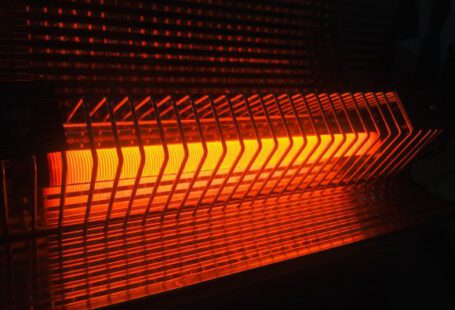Heat has been used for centuries as a natural remedy for various ailments. From hot water baths to thermal therapies, the application of heat in medicine has proven to be effective in promoting healing and relieving pain. This article explores the role of heat in different therapies and treatments, shedding light on its benefits and how it can be incorporated into modern medical practices.
The Science Behind Heat Therapy
Heat therapy, also known as thermotherapy, involves the application of heat to the body to improve circulation, relax muscles, and relieve pain. When heat is applied to the skin, it causes blood vessels to dilate, increasing blood flow to the affected area. This increased blood flow delivers more oxygen and nutrients to the tissues, promoting healing and reducing inflammation.
Heat therapy can be delivered in various forms, including hot packs, warm towels, heating pads, and warm water baths. Each method has its own advantages and can be tailored to suit the specific needs of the patient.
Heat Therapy for Musculoskeletal Pain
One of the most common uses of heat therapy is for musculoskeletal pain, such as backaches, muscle strains, and arthritis. Applying heat to the affected area can help relax tight muscles and reduce pain and stiffness. Heat therapy is often used in conjunction with other treatments, such as physical therapy and medication, to enhance the overall effectiveness of the treatment.
Heat Therapy for Wound Healing
Heat therapy has also been found to be beneficial for wound healing. When heat is applied to a wound, it increases blood flow to the area, which promotes the delivery of oxygen and nutrients necessary for tissue repair. Heat therapy can also help to increase the production of collagen, a protein that plays a crucial role in wound healing.
Heat therapy for wound healing can be delivered through the use of warm compresses or specialized devices that provide controlled heat to the wound. It is important to note that heat therapy should only be used on wounds that are clean and free from infection, as heat can exacerbate infection and delay healing.
Heat Therapy for Pain Relief
In addition to musculoskeletal pain, heat therapy can also be effective in providing relief from other types of pain, such as menstrual cramps and headaches. The application of heat helps to relax muscles and increase blood flow, reducing pain and discomfort. Heat therapy can be applied locally to the affected area or used as a whole-body treatment, such as in the form of hot baths or saunas.
Heat Therapy in Cancer Treatment
Heat therapy has also shown promise in the field of cancer treatment. Hyperthermia, a form of heat therapy, involves raising the temperature of cancer cells to a level that is lethal to them, while sparing normal cells. This can be achieved through various methods, including localized heat application, such as microwave or radiofrequency ablation, or whole-body hyperthermia, which involves heating the entire body.
Hyperthermia has been used in conjunction with other cancer treatments, such as radiation therapy and chemotherapy, to enhance their effectiveness. By increasing blood flow to the tumor and making cancer cells more sensitive to treatment, heat therapy can improve the outcomes of cancer treatments and potentially reduce the side effects associated with them.
Incorporating Heat Therapy into Modern Medicine
As the benefits of heat therapy become more widely recognized, efforts are being made to incorporate it into modern medical practices. From specialized devices that deliver controlled heat to the development of new techniques for localized heat application, researchers and medical professionals are constantly exploring ways to harness the healing power of heat.
In conclusion, heat therapy has a long history of use in medicine and continues to play a significant role in promoting healing and relieving pain. From musculoskeletal pain to wound healing and cancer treatment, heat therapy offers a natural and effective approach to improving patient outcomes. By understanding the science behind heat therapy and exploring innovative ways to incorporate it into modern medicine, we can harness the power of heat to enhance our well-being and improve the quality of healthcare.





